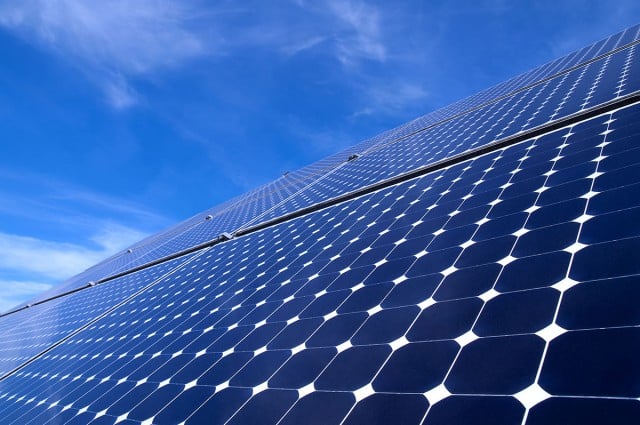 By Giles Parkinson of reneweconomy.com.au
By Giles Parkinson of reneweconomy.com.au
A new forecast by leading analysts Bloomberg New Energy Finance predicts that Australia will have more than 50GW (50,000MW) of solar capacity by 2040, and more than half of all generation capacity will be “behind the meter” and located in households and businesses.
The forecasts by Bloomberg, made at RenewEconomy’s Disruption and the Energy Industry conference in Sydney this week, also included a prediction that household solar capacity would be 2.5 times greater than that of remaining coal-fired generators by 2040.
Analyst Hugh Bromley says it will simply be a matter of economics. “Solar is getting cheap … and coal will become expensive,” particularly for new power plants. “It (coal) is not in the money any more.”
The forecasts reflect a couple of major trends that will take place in the energy market in coming decades.
The first is the push for consumers to generate their own electricity. Bromley predicts that half of all consumers in Australia will have rooftop solar by 2040.
Bloomberg has previously predicted that there will be around 37GW of rooftop solar in the Australian market, but for the first time has broken that down to different segments (see graph above). Around two-thirds of this (23GW) will be installed on homes, 5GW of commercial businesses, and 9GW on industrial facilities.
That industrial take up is unlikely to occur until the mid 2020s, but then will be rapid as it dovetails with the rollout of battery storage – meaning that energy intensive industries can, and will, use solar to drive their operations.
The combination of rooftop solar and 15,000MW of large-scale solar means that the technology will account for half of all Australia’s generation capacity by 2040. Combined with wind energy and hydro energy, renewables will account for two-thirds of capacity.
The other big trend is the growth in “flexible capacity” which will mostly mean battery storage, but also concepts such as demand management and controlled loads. This will be key to accompanying the proliferation of solar and other variable technologies such as wind.
This is part of the scenario that Bromley calls Solar 3.0 – which will feature automated control & analytics, fully integrated into power systems, and ubiquitous coverage.
It is the behind-the-meter market that represents the big change – and it accords with predictions from the International Energy Agency, and even huge utilities such as Engie, the owner of the Hazelwood brown coal generator in Victoria.
Bromley says this will be the result of cheap solar costs, cheap finance, and the benefits of locating generation close to consumption, rather than hundreds of kilometres away.
Bromley says that by 2040, 18 per cent of all consumption will be from behind-the-meter solar. The trends will include growing concepts such as “virtual power plants”, where the output from multiple sources is pooled and aggregated and used as a single power station. Trials are already underway in Queensland.
And Bromley says that even changes in tariffs will not alter the outcome much. “There is a lot of value occurring behind the meter,” he says. Solar will be at 8c-10c/kWh which, with tariffs at around 28c/kWh, offers substantial value.
Utilities in Australia have been jacking up fixed prices and network charges in an attempt to recover revenues they see as lost from the uptake of solar. “You can rejig tariffs by a substantial margin and still not affect the value of solar,” Bromley says.
He said that utilities had been largely resisting change – lobbying for diluted renewable energy targets, seeking the removal of subsidies, and taking no action that was different to business as usual. But in the last 18 months this was starting to change. “They have to respond,” he says.
Bromley admits, even his forecasts may be conservative. In WA, the energy minister Mike Nahan has predicted that the uptake of solar may be even more widespread and account for all of daytime energy consumption, and a similar prediction has been made by the Australian Energy Market Operator for South Australia.
Bromley pointed to the rapid uptake of new technologies by households over recent decades. “Incremental technologies are moving faster.”
The uptake of solar looks quite slow compared to these curves (see graph below). “This could move quicker,” he said, particularly if the technology became ubiquitous. “Not every technology gets ubiquitously adopted, but superior technologies generally do. Solar PV is going towards this trend …. the economics suggest that whether it’s behind the meter or in front of the meter, the economics will be appealing.”



